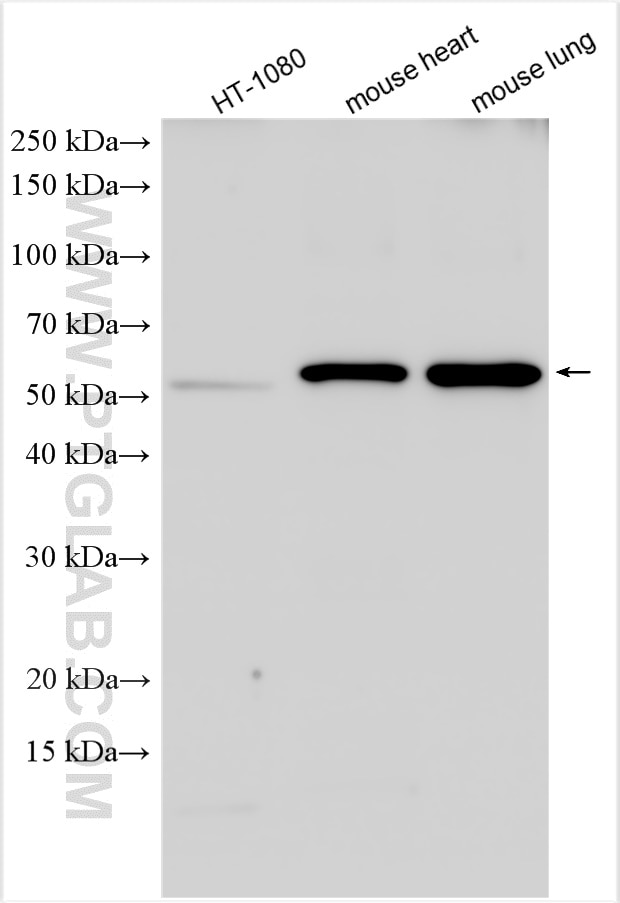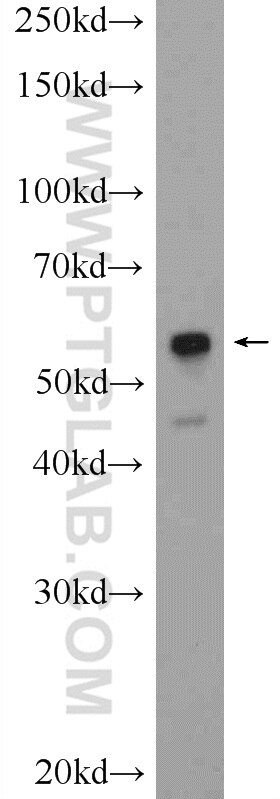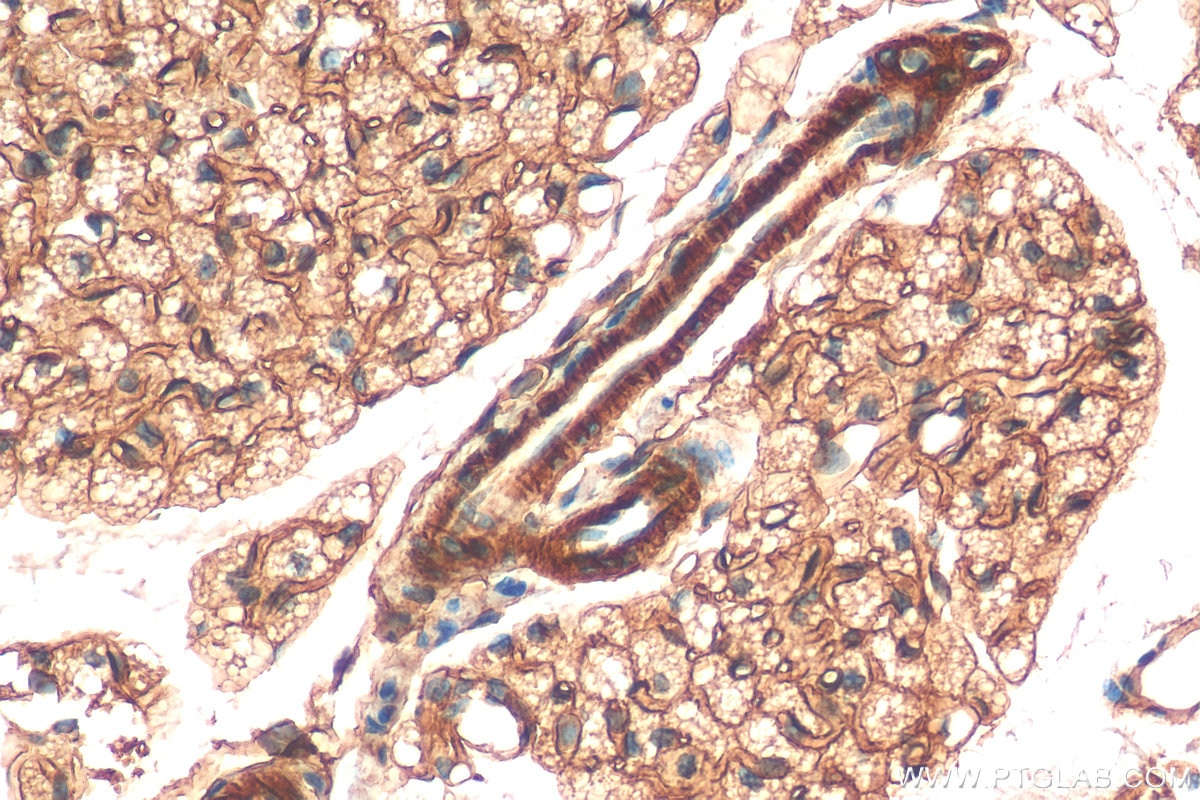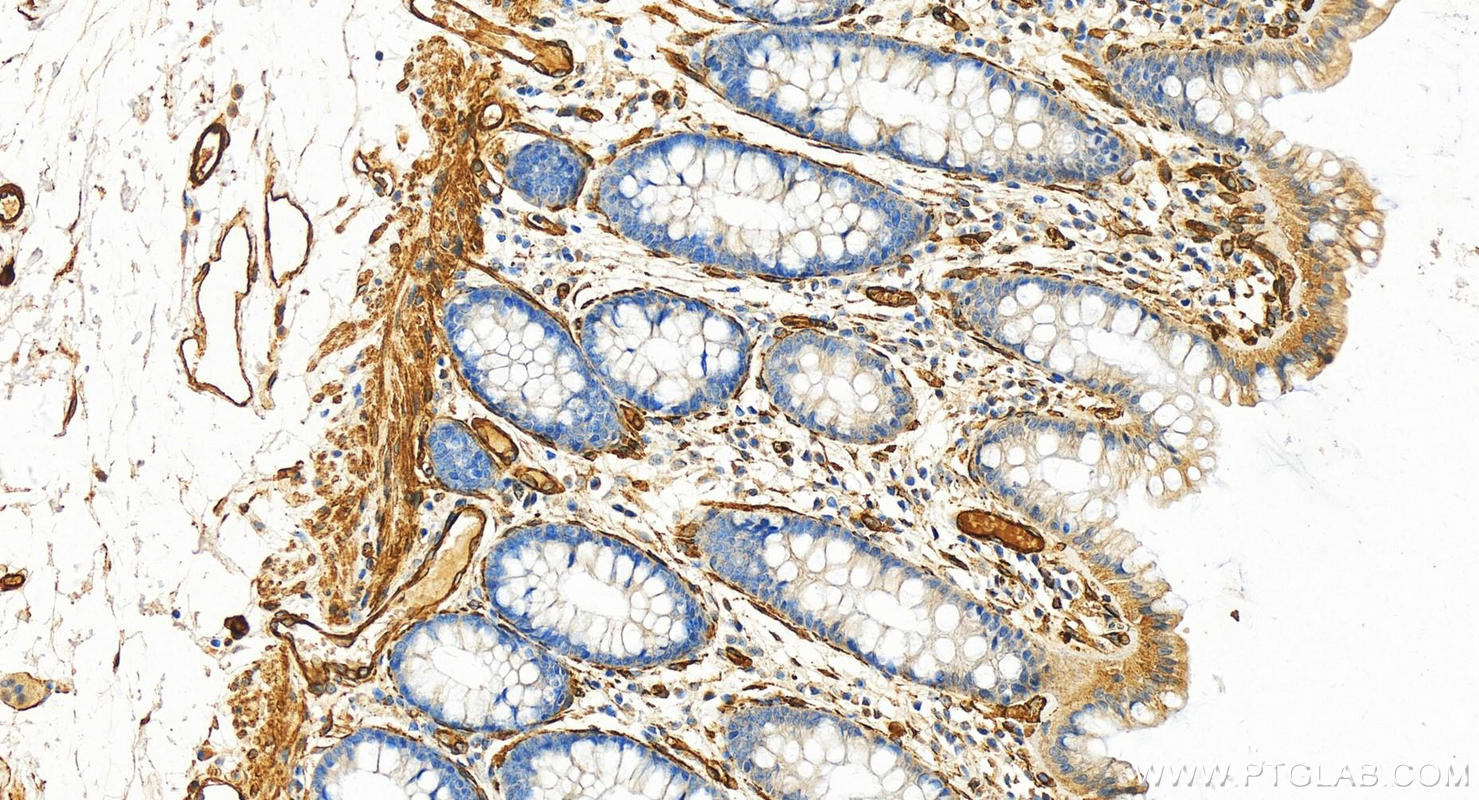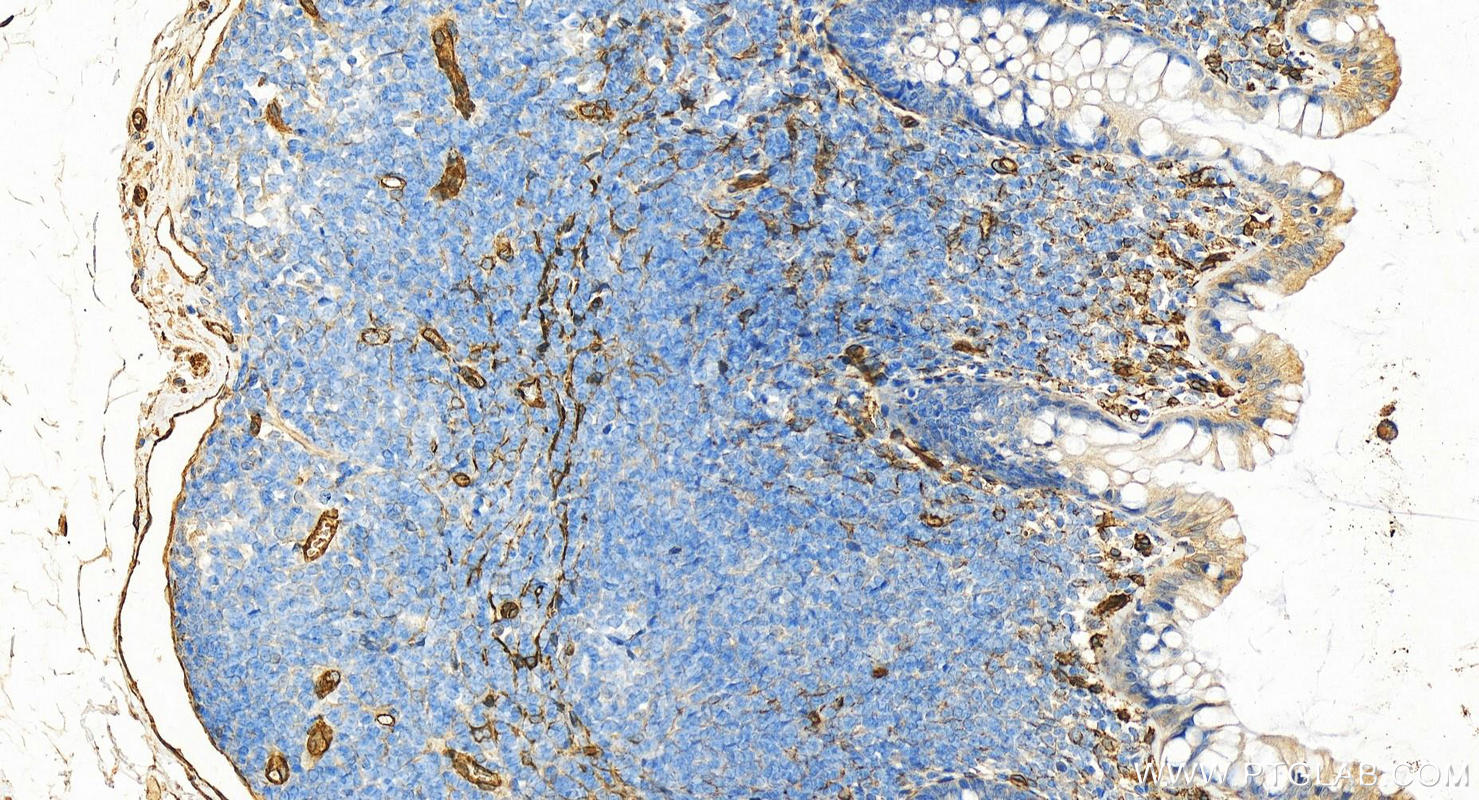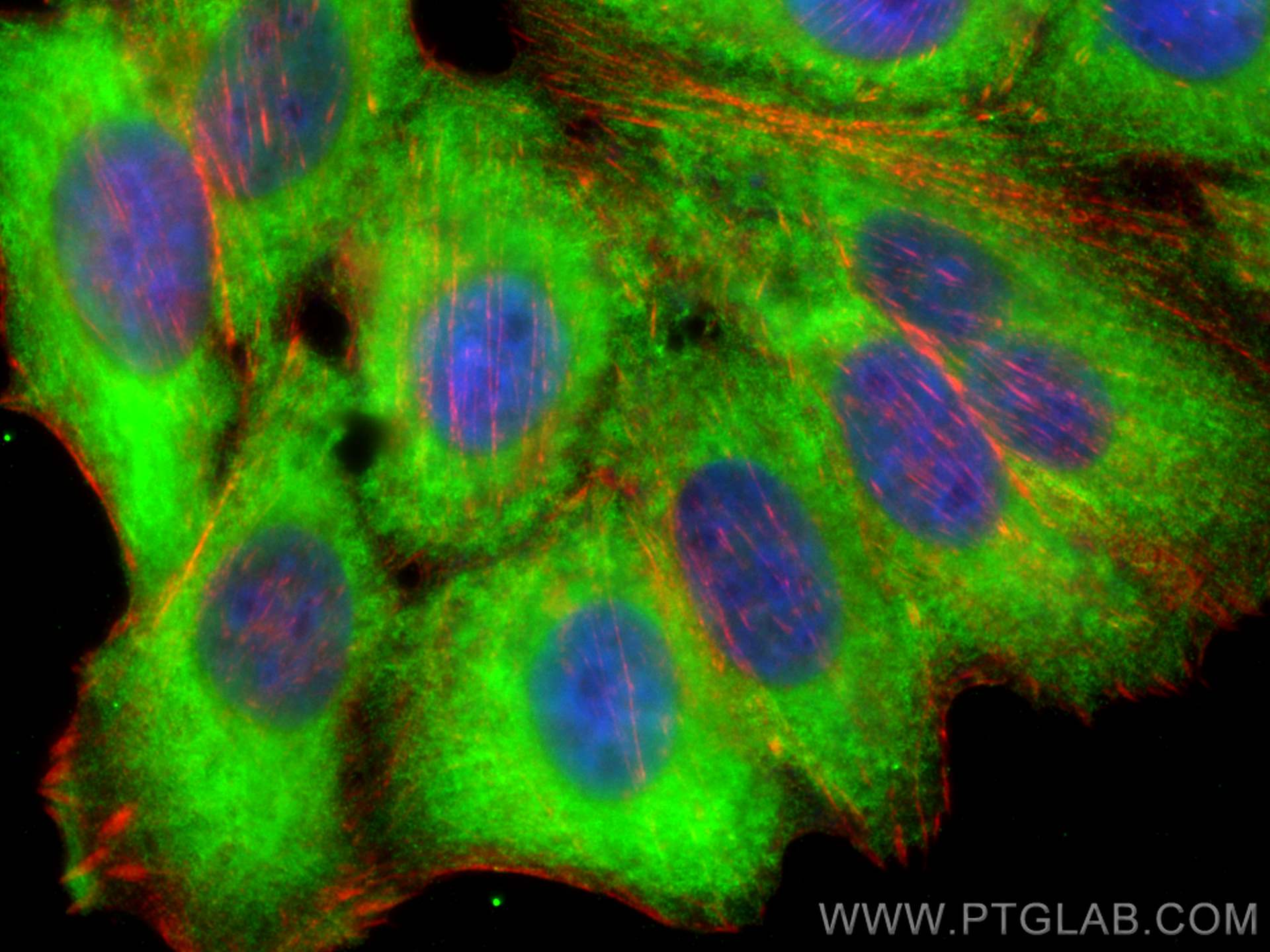Validation Data Gallery
Tested Applications
| Positive WB detected in | HT-1080 cells, rat heart tissue, mouse heart tissue, mouse lung tissue |
| Positive IP detected in | HT-1080 cells |
| Positive IHC detected in | human normal colon, mouse brown adipose tissue Note: suggested antigen retrieval with TE buffer pH 9.0; (*) Alternatively, antigen retrieval may be performed with citrate buffer pH 6.0 |
| Positive IF/ICC detected in | HepG2 cells |
Recommended dilution
| Application | Dilution |
|---|---|
| Western Blot (WB) | WB : 1:2000-1:10000 |
| Immunoprecipitation (IP) | IP : 0.5-4.0 ug for 1.0-3.0 mg of total protein lysate |
| Immunohistochemistry (IHC) | IHC : 1:500-1:2000 |
| Immunofluorescence (IF)/ICC | IF/ICC : 1:200-1:800 |
| It is recommended that this reagent should be titrated in each testing system to obtain optimal results. | |
| Sample-dependent, Check data in validation data gallery. | |
Published Applications
| KD/KO | See 7 publications below |
| WB | See 26 publications below |
| IHC | See 6 publications below |
| IF | See 9 publications below |
| IP | See 2 publications below |
Product Information
18892-1-AP targets PTRF in WB, IHC, IF/ICC, IP, ELISA applications and shows reactivity with human, mouse, rat samples.
| Tested Reactivity | human, mouse, rat |
| Cited Reactivity | human, mouse, monkey |
| Host / Isotype | Rabbit / IgG |
| Class | Polyclonal |
| Type | Antibody |
| Immunogen | PTRF fusion protein Ag13486 相同性解析による交差性が予測される生物種 |
| Full Name | polymerase I and transcript release factor |
| Calculated molecular weight | 43 kDa |
| Observed molecular weight | 50-55 kDa |
| GenBank accession number | BC008849 |
| Gene Symbol | PTRF |
| Gene ID (NCBI) | 284119 |
| RRID | AB_10596795 |
| Conjugate | Unconjugated |
| Form | Liquid |
| Purification Method | Antigen affinity purification |
| UNIPROT ID | Q6NZI2 |
| Storage Buffer | PBS with 0.02% sodium azide and 50% glycerol , pH 7.3 |
| Storage Conditions | Store at -20°C. Stable for one year after shipment. Aliquoting is unnecessary for -20oC storage. |
Background Information
Polymerase I and transcript release factor(PTRF) is an essential factor in the biogenesis of caveolae, which involve in numerous process, such as signal transduction and membrane and lipid trafficking. PTRF can terminate transciption of RNA Pol I, which involves pausing of transcription by TTF1, and dissocaition of the transcription complex, release the complex from the template. The calculated molecular weight of PTRF is 43 kDa, but modified PTRF is about 50-55kDa. (PMID: 11139612 )
Protocols
| Product Specific Protocols | |
|---|---|
| WB protocol for PTRF antibody 18892-1-AP | Download protocol |
| IHC protocol for PTRF antibody 18892-1-AP | Download protocol |
| IF protocol for PTRF antibody 18892-1-AP | Download protocol |
| IP protocol for PTRF antibody 18892-1-AP | Download protocol |
| Standard Protocols | |
|---|---|
| Click here to view our Standard Protocols |
Publications
| Species | Application | Title |
|---|---|---|
ACS Nano Engineering Extracellular Vesicles Restore the Impaired Cellular Uptake and Attenuate Intervertebral Disc Degeneration. | ||
Sci Adv Caveolae promote successful abscission by controlling intercellular bridge tension during cytokinesis.
| ||
Dev Cell Caveolae sense oxidative stress through membrane lipid peroxidation and cytosolic release of CAVIN1 to regulate NRF2 | ||
Autophagy CAV1-CAVIN1-LC3B-mediated autophagy regulates high glucose-stimulated LDL transcytosis.
| ||
Proc Natl Acad Sci U S A Inducible Fgf13 ablation enhances caveolae-mediated cardioprotection during cardiac pressure overload. | ||
Theranostics PTRF/Cavin-1 enhances chemo-resistance and promotes temozolomide efflux through extracellular vesicles in glioblastoma. |
